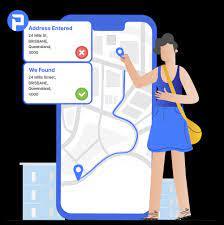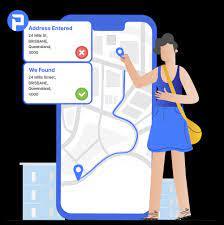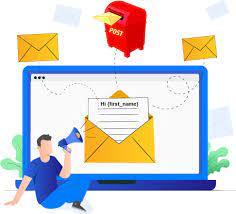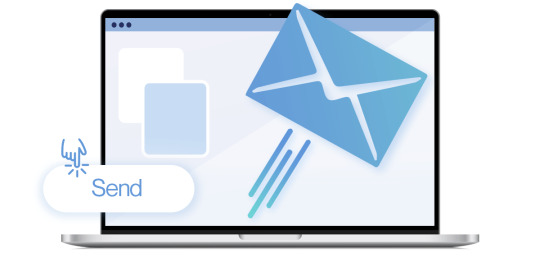#Postcard API
Explore tagged Tumblr posts
Text
Advantages of Cheque Printing Software
Cheque printing software allows a business to print cheques in bulk for various users with different bank accounts and other details. It helps a company to reduce expenditures and increase profits. The software works in various formats and is compatible with almost any printer. It is easy to use and can be integrated with other financial software systems for further processing. This software has high security measures to prevent theft of data and misuse by unauthorised persons.

The best cheque writing software offers a number of advantages including the ability to handle multiple accounts and banks, printing multiple cheques at once, and providing detailed reports on all activity. It also allows businesses to customize cheques and include a logo or signature. Additionally, the software can support multi-lingual cheques and currencies. The software can also be used to process direct deposits and pay invoices.
One of the benefits of this type of software is that it can save a lot of time by eliminating manual processes. It can also help businesses to avoid losing important information by backing up data regularly. It can also allow for the integration of multiple bank accounts and support international payments.
Another benefit is that it can be used by any size of company. This is because it is not linked to a specific platform and is compatible with most printers. It can also print multiple cheques per page and supports the use of blank cheque stock and MICR encoding. It can even create ACH files for direct deposit.
youtube
SITES WE SUPPORT
Postal API Software – Wix
0 notes
Text

Sarcophagus in the burial place of the sacred bulls of the Apis cult in the Serapeum of Saqqara, Egypt
British vintage postcard
#british#place#sepia#bulls#photography#cult#vintage#saqqara#serapeum#postkaart#apis#ansichtskarte#ephemera#carte postale#postcard#sacred#postal#briefkaart#sarcophagus#photo#burial#egypt#tarjeta#historic#postkarte
9 notes
·
View notes
Text
International Address Verification API
When you send packages, letters and direct mail overseas, it's more expensive to get your message and product there. Inaccurate addresses can cause delays in the delivery process and cost your business money from returned mail, address correction fees and more. The good news is that there are solutions. Using an international address verification api can help you eliminate mistakes at the point of entry and improve your customer's experience by providing them with a more accurate address.

An international address validation api compares the inputted address against a database of official, authoritative addresses for a specific country. The database is managed by authorities in that country and is often much more comprehensive than the US Postal Service's official address data. The address is then validated, reformatted and returned in the standard format for that particular country.
It is important to note that there is no centralized authority that determines foreign address formats. Each country's postal authority establishes its own format based on a combination of its own standards and those set out by the UPU (International Postal Union). A good address validation API will know this and use that information to ensure that an address is valid for the country in question.
A real-time international address validation solution can be used in waterfall with a database approach to increase the overall verification rate of an address. Incognia's customers who only had a 70% verification rate using international databases saw an increase to 90% when they integrated a real-time solution in that waterfall. Pacejet offers global support for over 47 countries so you can be confident that your international addresses are valid, deliverable and formatted correctly.
youtube
SITES WE SUPPORT
Mail Postcard Api – Blogger
1 note
·
View note
Text
Send Postcards Online Australia
Postcards are an effective and inexpensive way to market your business, product, service, or event. They also allow your customers to interact with your brand, making it an excellent way to keep them engaged. Using automation software, you can print and mail postcards for appointment reminders, promotional offers, or any other type of message.

You can use any photos in your camera roll or from your social media accounts to create a custom postcard. Then, write a message and add a stamp. You can also choose from a variety of designs to customize the front of your card. You can even send your postcards to multiple addresses at once. You can also include a link to your website or social media pages in the text.
MyPostcard offers free international and domestic shipping on all cards. Its mobile app allows you to select a postcard template and personalize it with photos or stickers. You can also use the app to add a custom message and postmark. The app is easy to use, and you can even save your designs for future uses.
Another great option for sending postcards online is Postsnap, which has a wide selection of postcard templates. The app lets you customize the design, text, and address to your recipient. It also adds a QR code that links to a message-back feature. The app is easy to use, and it has a clean interface. However, it can be frustrating to find the perfect postcard for each recipient, and it can take a while to complete an order.
youtube
SITES WE SUPPORT
Send Check Api – BLogger
0 notes
Text
250502 BTS Japan's Tweet
/ 📢『j-hope Tour 'HOPE ON THE STAGE' in JAPAN』 ライブビューイング開催決定! \ J-HOPE���ら日本のファンに向けて特別なメッセージが届きました💜 5月31日(土)大阪公演の模様を、日本全国の映画館で生中継します🔥 映画館の大迫力のスクリーンで一緒にお楽しみください! 本日5月2日(金)12:00〜 各先行抽選予約スタート🎟️ 📍https://api-liveviewing.com/hopeonthestage-japan/ さらに! 入場者限定プレゼント🎁 手書きメッセージ(複写)入りポストカードを配布✍️ ぜひ劇場でGETしてください💜 #jhopeライブビューイング #HOPE_ON_THE_STAGE_TOUR_JAPAN #HOS_TOUR_JAPAN #jhope #jhope_TOUR
/ 📢 j-hope Tour 'HOPE ON THE STAGE' in JAPAN Live viewing confirmed ! \
A special message from J-hope has arrived for fans in Japan 💜 The Osaka concert on May 31st (Sat) will be streamed live in cinemas accross Japan 🔥 Let's enjoy it together on the big screen!
Raffle applications open today, May 2nd (Fri), from 12:00 🎟️ 📍https://api-liveviewing.com/hopeonthestage-japan/
There's more ! All attendees will receive an exclusive gift 🎁 A special postcard with a handwritten (replica) message ✍️ Please come get it at the theater 💜
#jhope_live_viewing #HOPE_ON_THE_STAGE_TOUR_JAPAN #HOS_TOUR_JAPAN #jhope #jhope_TOUR
Video translation:
Hi everyone, this is J-hope. The details for the live viewing of my j-hope Tour 'HOPE ON THE STAGE' in JAPAN concert have been confirmed. The show at Kyocera Dome Osaka will be streamed live in cinemas accross Japan. Starting at 18:30 on May 31st! I'm looking forward to meeting you at the theater, Bye bye!
Trans cr; Elfe @ bts-trans © TAKE OUT WITH FULL CREDITS
#250502#jhope#hobi#hoseok#bts japan#big hit#official#twitter#hope on the stage#live viewing#bts#bangtan
28 notes
·
View notes
Text
Traditional Vs Automated Direct Mail Services
Direct mail has long been a trusted marketing channel. In 2025, businesses face a choice between traditional direct mail services and automated solutions. Understanding the difference can drastically impact your campaign’s efficiency, ROI, and customer experience.

What Is Traditional Direct Mail?
Traditional direct mail involves manual processes such as:
Designing postcards or letters by hand or through desktop software
Printing at local shops or internal print facilities
Manually stuffing, stamping, and mailing
Tracking via physical receipts or third-party couriers
Pros:
Full control over the process
Hands-on personalization
Local vendor relationships
Cons:
Time-consuming
Prone to human error
Hard to scale
Costlier for small volumes
What Is Automated Direct Mail?
Automated direct mail refers to using software or APIs to trigger, personalize, print, and send mail pieces based on digital actions or CRM data.
Examples:
A new customer signs up, and a welcome postcard is triggered automatically
Abandoned cart triggers a mailed coupon
Real-time API sends birthday cards based on database date
Pros:
Scalable for millions of mailings
Real-time integration with CRMs and marketing platforms
Consistent branding and quality
Analytics and tracking included
Cons:
Higher setup cost initially
Requires data hygiene and tech alignment
Key Differences Between Traditional and Automated Direct Mail
FeatureTraditionalAutomatedSpeedSlow (days to weeks)Instant or scheduledScalabilityLimitedHighly scalablePersonalizationManualDynamic via variable dataTrackingManual or nonexistentDigital trackingIntegrationNoneAPI and CRM support
When Should You Choose Traditional?
For small, one-time mailings
When personal touch matters (e.g., handwritten letters)
In areas with no access to digital tools
When to Use Automated Direct Mail?
For ongoing marketing campaigns
When speed, consistency, and tracking are priorities
For eCommerce, SaaS, healthcare, insurance, and real estate
Use Case Comparisons
Traditional Use Case: Local Real Estate Agent
Manually prints and mails just listed postcards to a zip code every month.
Automated Use Case: National Insurance Company
Triggers annual policy renewal letters for 500,000+ customers via API.
Benefits of Automation in 2025
Real-Time Triggers from websites, CRMs, or payment systems
Enhanced Reporting for ROI measurement
Reduced Costs with bulk printing partnerships
Faster Delivery using localized printing partners globally
Eco-Friendly Workflows (less waste, digital proofing)
How to Switch from Traditional to Automated Direct Mail
Audit your current workflow
Choose a provider with API integration (e.g., PostGrid, Lob, Inkit)
Migrate your address data and test campaigns
Train your team and build trigger-based workflows
Conclusion: Choosing the Right Direct Mail Method
Ultimately, the right choice depends on your goals. While traditional direct mail has its place, automated direct mail offers speed, flexibility, and scale. For modern businesses aiming for growth and efficiency, automation is the clear winner.
SEO Keywords: traditional vs automated direct mail, automated mailing services, direct mail automation, API for direct mail, manual vs automated marketing.
youtube
SITES WE SUPPORT
Healthcare Mailing API – Wix
2 notes
·
View notes
Text
tagged by @girldante <3
no pressure tags @architetturacannibale @apis-vergilii @eresia-catara @moonschocolate <33
3 notes
·
View notes
Text
Cheque Writing Software Free
Cheque writing software free is a great tool for businesses that want to streamline their cheque writing process and save time. This software can also reduce the risk of errors that often occur when manually writing cheques. Cheque printing software can also help businesses stay organized by keeping track of all their transactions. It can also help businesses stay in compliance with regulations such as the PIPEDA or Personal Information Protection and Electronic Documents Act.
In addition to being able to print cheques on demand, some cheque writing software solutions offer advanced security features to protect your data and bank accounts. These features may include micro prints, watermarks, and secure passwords to protect your confidential information. You should always enquire about these features before buying the cheque writing software for your business.

A good cheque writing software is one that allows you to customize your checks with your company’s logo, signature, and fonts. It should also allow you to add a secondary signature if necessary. This way, you can ensure that the correct person signs your cheque. In addition, the software should be able to store details of all payees, including customers, employees, and vendors. This can help you to make payments quickly without having to look through records and spreadsheets. It should also have a feature that enables you to reconcile your cheques with your bank accounts. This can help you avoid misunderstandings with your bank and avoid paying unnecessary fees to your account.
youtube
SITES WE SUPPORT
Postal API Software – Wix
0 notes
Text
How does direct mail automation benefit your business?

In a highly digital, fast-paced world, businesses constantly seek effective ways to cut through the noise and engage customers meaningfully. While email marketing, social media, and online advertising dominate most strategies, direct mail marketing remains a powerful and underutilized channel. But it’s not just traditional mail anymore—direct mail automation has revolutionized this strategy, allowing businesses to personalize, streamline, and scale outreach with precision and minimal effort.
This guide explores the top benefits of direct mail automation and why your business should consider integrating it into your marketing and communication workflows.
What is Direct Mail Automation?
Direct mail automation refers to the integration of digital tools and APIs to send personalized, physical mail—such as postcards, letters, flyers, brochures, or checks—automatically, based on customer behavior or campaign triggers.
Instead of manually printing, stuffing, stamping, and mailing materials, businesses can use direct mail platforms or APIs that handle everything from printing to delivery, using predefined rules and data integrations with CRMs, eCommerce platforms, or marketing automation software.
1. Enhanced Operational Efficiency
Manual direct mail campaigns are time-consuming and labor-intensive. Coordinating designers, printers, envelopes, and postage for every campaign creates operational bottlenecks.
With automation, your business can:
Automate batch or trigger-based mailings from your CRM or eCommerce system.
Eliminate repetitive administrative work.
Enable same-day or next-day fulfillment without human intervention.
Manage mailing campaigns remotely using cloud platforms.
This level of automation reduces turnaround time from weeks to days or even hours, freeing up your team to focus on strategy rather than logistics.
2. Higher Personalization for Better Engagement
Personalization drives response rates—and direct mail is no exception. With direct mail automation, businesses can use customer data to generate dynamic, personalized content, such as:
Names and addresses.
Purchase history and product recommendations.
Customized offers or QR codes.
Personalized URLs (PURLs) and promo codes.
This results in better open rates, response rates, and conversions, especially when compared to generic mass mailers. Studies show personalized direct mail achieves up to 135% higher response rates than non-personalized alternatives.
3. Improved Targeting with Data Integration
Direct mail automation tools allow seamless integration with customer data platforms. Whether you're using Salesforce, HubSpot, Shopify, or Klaviyo, automation enables you to:
Segment audiences based on behaviors (e.g., cart abandonment, last purchase).
Trigger mailings based on specific actions.
Sync customer journeys between online and offline touchpoints.
By leveraging this integration, your business can reach the right audience at the right time with the right message—enhancing both relevance and return on investment.
4. Increased ROI Compared to Digital Ads
While digital channels are essential, they are saturated. Many consumers experience “banner blindness” or ignore marketing emails. Direct mail stands out by putting something physical in the hands of your audience.
According to Canada Post and USPS:
73% of consumers prefer receiving physical mail over digital advertising.
Direct mail has a median ROI of 29%, comparable to social media and paid search.
People are 70% more likely to remember a brand they saw in print versus digital.
With automation, you achieve these benefits without the traditional costs and delays of manual mailing processes.
5. Scalable Campaigns for Any Business Size
Whether you're a startup, SMB, or enterprise, direct mail automation scales with your needs:
SMBs can run postcard promotions or loyalty mailings without hiring print vendors.
Ecommerce stores can automate abandoned cart mailers or product launches.
Enterprises can run multi-step direct mail nurturing workflows in sync with their digital campaigns.
Because automated systems are flexible and cloud-based, they scale without added headcount or infrastructure.
6. Multichannel Integration Improves Customer Journeys
Direct mail isn’t just an offline tool—it plays an essential role in omnichannel marketing. Direct mail automation allows you to:
Send a thank-you postcard after a purchase.
Deliver a reminder mailer when someone abandons their online cart.
Follow up on an email campaign with a tangible printed offer.
Combining direct mail with email, SMS, or paid ads creates a cohesive brand experience across channels, increasing your chances of conversion.
7. Real-Time Tracking and Analytics
Unlike traditional mail, automated direct mail platforms offer real-time tracking and delivery updates. You can:
Track when a mailpiece is printed, shipped, and delivered.
Sync delivery timelines with follow-up marketing actions.
Monitor campaign performance via dashboards and attribution models.
This data enables better decision-making and performance optimization, bringing accountability to offline channels that was previously impossible.
8. Reduced Costs Over Time
While direct mail may initially seem costlier than email, automation significantly reduces costs through economies of scale and operational savings:
No need for in-house printers or mailing staff.
Postage discounts from bulk automation vendors.
Lower error rates and fewer reprints.
Less waste from mistargeted or returned mail.
Over time, the combination of higher response rates and lower operational overhead makes direct mail automation a cost-effective marketing investment.
9. Faster Speed-to-Market
With automated workflows, campaigns can be created and launched in minutes. Whether responding to customer actions or launching seasonal offers, you can:
Launch a campaign in under 24 hours.
Respond in real-time to customer activity.
Avoid production delays associated with print vendors.
This agility gives your business a competitive edge, especially during time-sensitive promotions or retention campaigns.
10. Compliance and Data Security
Automation platforms often offer built-in compliance with GDPR, HIPAA, or other regional regulations. You can:
Use address verification to avoid misdeliveries.
Safeguard customer data through encryption and secure APIs.
Maintain audit logs of every mailpiece generated and sent.
This ensures your customer communication meets privacy and legal standards, especially important for industries like healthcare, insurance, and finance.
11. Eco-Friendly and Sustainable Options
Many automation providers offer eco-conscious print and delivery options:
FSC-certified paper.
Carbon-neutral mail delivery.
Print-on-demand to avoid waste.
Digital previews before printing.
These features allow your brand to demonstrate environmental responsibility while still enjoying the tangible impact of direct mail.
12. Better Customer Retention and Loyalty
Direct mail feels more thoughtful and personal than digital outreach. Sending:
Birthday postcards,
Re-engagement letters,
VIP coupons, or
Welcome kits
...can build emotional connections with your customers. With automation, this becomes effortless—triggered automatically based on lifecycle events.
Use Cases of Direct Mail Automation Across Industries
IndustryDirect Mail Automation Use CaseseCommerceAbandoned cart reminders, loyalty postcards, order confirmationsReal EstateOpen house invites, appointment reminders, just-sold flyersHealthcareHIPAA-compliant appointment letters, lab results, remindersEducationEnrollment packets, alumni appeals, campus event invitesFinancial ServicesAccount statements, policy updates, compliance lettersNonprofitsDonation appeals, thank-you letters, event invitations
How to Get Started with Direct Mail Automation
Choose the Right Platform: Look for providers like Lob, PostGrid, Click2Mail, or Postalytics that offer CRM/API integrations, templates, and analytics.
Connect Your Data Sources: Integrate your CRM, eCommerce platform, or marketing automation tools.
Segment and Personalize: Use customer behavior or attributes to personalize content and offers.
Set Automation Rules: Define triggers like "Send postcard 3 days after cart abandonment."
Test and Track: Launch test campaigns, analyze delivery and engagement data, and iterate.
Conclusion
Direct mail is experiencing a powerful resurgence—thanks to automation. With the ability to personalize at scale, reduce operational effort, integrate across channels, and deliver real-world impact, direct mail automation bridges the gap between offline presence and digital agility.
By investing in automated direct mail, businesses unlock a high-converting, tangible, and trusted medium to deepen relationships, drive sales, and stand out in a noisy marketplace.
youtube
SITES WE SUPPORT
HIPAA Automated Mails – Wix
0 notes
Text
DHL International Address Verification
DHL offers international parcel delivery services along with e-commerce fulfillment and logistics solutions. They provide services in more than 220 countries and territories, including North America, South and Latin America, Europe, Asia, Middle East and Africa.
The company has a variety of delivery options depending on the size of your package and where you live. If you want to track your shipment, just enter the tracking number and click the "Track Shipment" button. You can also check delivery times, which depend on the type of shipping option you choose.

When you ship with DHL, your tracking events will be created after the shipment leaves the warehouse of your merchant or online shop. This usually happens within 24 hours. The first tracking event will show the package is on its way to its destination, and the next update will tell you when it's been delivered.
If your package is being sent to an address in the US, you can use the ZIP+4 verification feature to verify that the zip code is correct and that the address is valid. You can also verify the name, city, state, and postal code, and you can see whether the area is a rural, suburban, or urban area.
However, USPS does not offer a service to verify, standardize, or parse international addresses. This means that if you only use the USPS API for verification, you may miss millions of valid addresses. For this reason, you need to use another service that supports non-postal address validation for all international locations.
youtube
SITES WE SUPPORT
Mail Postcard Api – Blogger
0 notes
Text
Send Postcards Online India
Postcards are a beautiful way to express your sentiments to someone. They are more personal and meaningful compared to the impersonal and distant digital communication via gadgets like smartphones or laptops. Moreover, handwriting is also a form of art that can be appreciated by others. You can use a postcard to send a message or share an image. This is especially true if you are travelling to another country. Here are some tips for writing a postcard that your recipient will love to read:

Write a personal message in readable handwriting. Include the destination and address of the receiver on the postcard and the postage stamps (preferably with the year mentioned) on it. You can also ask your post office to get a special cancellation for the postcard. This will make your postcard more appealing and will also introduce the receiver to philately (stamp collecting).
Sending a postcard is an inexpensive and convenient way to communicate. It is also a great way to reconnect with friends and family. You can find a postcard in any shop that sells stationery or at the post office. Make sure you write the correct address and PIN code on the postcard. The postal department will dispatch the postcard to its destination within India.
youtube
SITES WE SUPPORT
Send Check Api – BLogger
0 notes
Text
From Manual to Modern: How APIs Simplify Print and Mail
In an era where speed, scalability, and automation define business success, manual processes are rapidly becoming obsolete. One area where this transformation is especially evident is in the realm of print and mail. Traditionally a labor-intensive operation riddled with inefficiencies, the print and mail process is undergoing a major evolution, thanks to the rise of automation technologies—particularly APIs.
APIs, or Application Programming Interfaces, are quietly powering some of the biggest leaps forward in enterprise workflows. Nowhere is this more transformative than in print and mail, where APIs allow companies to automate everything from printing invoices to mailing personalized postcards. This shift from manual labor to digital integration not only saves time and money, but also enhances the accuracy, scalability, and effectiveness of communications.
Let’s explore how modern businesses are using APIs to modernize their print and mail systems, eliminate friction, and provide better experiences for both employees and customers.

Eliminating Bottlenecks with Automation
Manual print and mail processes are filled with logistical pain points. Employees must generate documents, print them, fold pages, stuff envelopes, affix postage, and coordinate pickups or deliveries. Each of these steps introduces potential delays and the risk of human error.
By integrating a print and mail API into their workflows, companies remove the need for physical handling. Documents can be generated and mailed automatically based on predefined triggers or customer actions. This end-to-end automation dramatically reduces the cycle time from document creation to delivery, enabling real-time response rather than batch-based workflows.
Integrating with Existing Digital Systems
One of the most powerful advantages of modern APIs is their ability to integrate seamlessly with existing platforms. Businesses don’t need to reinvent their tech stack to automate print and mail. Whether using CRM systems, billing software, or e-commerce platforms, APIs connect these tools directly to print and mail services.
When a customer completes a transaction, an API can automatically initiate the printing and mailing of a receipt, thank-you card, or invoice. This real-time integration ensures that physical communications are as agile as digital ones, helping businesses deliver timely and relevant information without extra manual steps.
Improving Accuracy and Reducing Errors
Human errors are common in manual mailing processes—incorrect addresses, mismatched documents, or forgotten steps can undermine the integrity of communication. These mistakes can lead to customer dissatisfaction, compliance violations, and financial losses.
With APIs managing the process, companies can automate address verification, document selection, and delivery tracking. Each step is governed by data and rules rather than manual judgment, significantly improving consistency and accuracy. This is particularly important for regulated industries like healthcare and finance, where precision is non-negotiable.
Enhancing Customer Experience Through Personalization
Customers today expect personalized experiences. A generic letter or promotional mailer often fails to make an impact. APIs allow businesses to dynamically generate personalized content for each recipient—tailoring text, images, and even design elements based on customer data.
This level of customization was once impractical for large-scale print campaigns. Now, with API-driven workflows, businesses can send thousands of unique, individualized mail pieces effortlessly. This capability boosts engagement, drives response rates, and makes each customer feel valued.
Supporting Scalable Growth
Manual systems rarely scale efficiently. As businesses grow, the volume of print and mail increases, quickly overwhelming in-house teams and resources. Hiring additional staff, expanding facilities, or investing in more equipment becomes costly and time-consuming.
APIs eliminate this scaling issue. Once integrated, they can handle increasing volumes without additional overhead. Whether sending ten documents or ten thousand, the system performs with the same speed and reliability. This scalability allows businesses to grow without being held back by operational constraints.
Reducing Overhead Costs
Operating an internal print and mail function involves high costs—printers, ink, paper, envelopes, postage meters, and storage all add up. There’s also the cost of staff time spent managing these processes.
API-driven solutions eliminate much of this overhead. By outsourcing printing and mailing through automated systems, businesses convert fixed costs into variable ones—paying only for what they send. Many providers also benefit from bulk postal discounts, which further reduce costs and make direct mail more competitive with digital outreach.
Accelerating Time to Delivery
Speed is critical in today’s business environment. Whether you're sending a bill, a compliance notice, or a promotional offer, delays can lead to lost revenue or missed opportunities. Traditional mailing processes often take days, if not weeks, from conception to delivery.
With an API-based system, the turnaround is nearly immediate. Once a trigger is activated—such as a customer placing an order or reaching a milestone—a print job is automatically queued, processed, and handed off for delivery within hours. This allows businesses to maintain momentum in their customer communications and ensure time-sensitive messages are received promptly.
Enabling Consistent Branding
Maintaining brand consistency across print materials can be challenging when multiple teams or offices are involved. Variations in design, fonts, or messaging dilute brand identity and confuse customers.
An API-based approach allows companies to define brand templates and rules centrally. All communications, regardless of source or purpose, follow consistent design standards and tone. This helps reinforce brand trust and ensures every piece of mail aligns with company identity.
Facilitating Compliance and Security
Businesses in regulated industries are often subject to stringent requirements around document handling, delivery timelines, and customer privacy. Manual processes introduce risks that can result in fines or reputational damage.
API providers often include built-in compliance features—such as encryption, audit trails, address validation, and secure print facilities. By automating document workflows, companies reduce human exposure to sensitive data and improve their ability to demonstrate regulatory compliance through detailed logs and verification systems.
Improving Performance Visibility
Manual mailing processes offer little in the way of analytics. Once a letter leaves your office, it becomes difficult to track its journey or impact. This lack of visibility hinders optimization and limits ROI insights.
Modern APIs include real-time tracking and reporting features. Businesses can monitor job status, delivery confirmations, and campaign performance directly from their dashboards. These insights help marketers and operations teams adjust strategies, improve targeting, and justify investment in physical communications.
Offering Flexible Use Cases
A print and mail API isn't just for invoices or statements. It supports a wide range of use cases across industries. Retailers use APIs to send promotional postcards or loyalty offers. Insurance companies send policy updates and claims communications. Healthcare providers mail appointment reminders and HIPAA-compliant documents.
The flexibility of these systems makes them suitable for everything from routine operational correspondence to high-impact marketing campaigns. This versatility adds tremendous value and allows businesses to use one solution across departments and customer touchpoints.
Reducing Environmental Waste
While print has historically been associated with waste, modern systems are changing that. By automating print jobs through APIs, companies can eliminate overprinting, reduce returns, and only send mail when needed.
Some API providers also offer eco-friendly printing options—such as recycled paper, carbon-neutral delivery, and plant-based inks. When used thoughtfully, API-driven print and mail can support sustainability goals and reduce environmental impact without sacrificing effectiveness.
Minimizing Vendor Management
Working with multiple vendors for design, printing, mailing, and tracking complicates workflows and introduces coordination issues. API systems consolidate these services under one automated roof.
With a single point of integration, businesses can eliminate redundant relationships and streamline operations. This simplifies procurement, speeds up campaign execution, and reduces the number of stakeholders needed to manage the communication process.
Supporting International Expansion
Global businesses often struggle to maintain consistent communication across different geographies due to mailing regulations, logistics, and language barriers. Manual approaches are cumbersome and error-prone at international scale.
APIs that support global printing and mailing can localize documents, select appropriate delivery providers, and ensure compliance with regional postal systems. This allows businesses to expand internationally without sacrificing quality or efficiency in their customer communications.
Aligning with Digital Transformation Goals
Digital transformation is a top priority for companies seeking to stay competitive. Automating print and mail with APIs is a natural extension of that effort. It removes analog barriers, integrates physical mail into digital systems, and enables organizations to operate with modern agility.
In doing so, companies future-proof their operations, reduce their dependence on outdated infrastructure, and align all aspects of communication—physical and digital—under a unified, intelligent strategy.
Conclusion
The print and mail process has long been seen as a cumbersome, outdated necessity. But with the advent of powerful APIs, it has become a streamlined, intelligent, and automated function that contributes directly to business efficiency and customer engagement.
From reducing costs and errors to enabling personalized, scalable, and compliant communication, APIs are transforming how businesses approach their print and mail operations. No longer limited by manual steps and slow timelines, companies can now deliver timely, targeted, and tangible messages as effortlessly as they send an email.
The move from manual to modern isn’t just about convenience—it’s about creating better outcomes. Businesses that embrace print and mail APIs position themselves to operate smarter, engage more effectively, and grow without constraints.
youtube
SITES WE SUPPORT
Secure Printing Made Easy: HIPAA, Print Mail API & Postcard API – Wix
SOCIAL LINKS
Facebook Twitter LinkedIn Instagram Pinterest
0 notes
Text
Benefits of Outsourcing Your Print and Mail Letter Needs
As businesses scale, managing in-house print and mail operations becomes increasingly inefficient. Outsourcing print and mail services to specialized providers offers a smart solution—freeing up time, resources, and infrastructure. But is outsourcing right for your organization?

This guide outlines the key benefits of outsourcing print and mail letters, with real-world examples, cost savings data, and risk mitigation strategies.
1. What Are Print and Mail Outsourcing Services?
Outsourcing these services involves handing over tasks such as:
Printing invoices, checks, or marketing letters
Envelope stuffing and addressing
Postal sorting and bulk mailing
Certified mail and tracking
Outsourced partners typically handle this via automated platforms and mail fulfillment centers.
2. Core Benefits of Outsourcing
1. Cost Reduction
Save on printers, ink, paper, and postage
Reduce labor costs
Avoid equipment maintenance and upgrades
2. Enhanced Accuracy and Compliance
Professionals handle address validation, barcode insertion, and formatting
HIPAA, SOC 2, and PCI-compliant processes
3. Time Efficiency
No manual folding or stuffing
Next-day or even same-day mail drop capabilities
4. Scalability
Easily manage high-volume campaigns or seasonal spikes
5. Automation and Integration
Direct Mail APIs allow you to automate mailings directly from your software
CRM and ERP integration (Salesforce, QuickBooks, etc.)
3. Outsourcing Use Cases by Industry
Healthcare: Sending appointment reminders, EOBs
Banking: Statement mailing, compliance notices
Utilities: Billing letters and shut-off warnings
eCommerce: Return labels and order confirmations
4. How It Works: The Process
You upload or automate a document via API
The partner validates and formats it
The document is printed and packaged
It's mailed with tracking or certified delivery
5. Case Study: Reducing Mailing Costs by 60%
A regional utility company moved from in-house to outsourced mailing using PostGrid. Result:
60% reduction in print/mail cost
90% fewer customer complaints due to misdelivery
Full tracking of every notice sent
6. Risks and How to Mitigate Them
Data Privacy: Choose providers with SOC 2/HIPAA certifications
Loss of Control: Mitigated by using platforms with real-time dashboards
Integration Issues: Avoid by selecting API-supported vendors
7. When to Outsource vs. Keep In-House
FactorIn-HouseOutsourcedVolumeLowMedium to HighCompliance NeedsLowHighBudgetHigh CapExLow OpExAutomationManualFully automated
8. FAQs
Q: Is outsourcing print and mail secure? Yes—especially when using HIPAA or SOC 2 compliant providers.
Q: Can I still personalize my letters? Absolutely. Most services support variable data printing.
Q: What kind of mail can I outsource? Statements, invoices, letters, postcards, checks, and more.
Conclusion
Outsourcing your print and mail operations is not just a cost-saving tactic—it’s a growth-enabling strategy. By offloading time-consuming and error-prone processes, you can redirect resources to high-impact areas like sales and customer service.
youtube
SITES WE SUPPORT
Mail & Print Letters – Wix
0 notes
Text
What Can You Do With a Postcard API?

In a world flooded with digital ads, postcards have made a strong comeback thanks to their tangible nature, high open rates, and emotional impact. With the rise of marketing technology, businesses can now automate this channel using a Postcard API—a tool that bridges software platforms and physical mailing infrastructure.
But what can you do with a Postcard API? Let’s explore how businesses across industries can streamline offline engagement, improve conversions, and deliver personalized messages right to their customers' doorsteps—programmatically.
What Is a Postcard API?
A Postcard API is a programming interface that allows applications, CRM platforms, or marketing software to send postcards by mail automatically. It connects your digital workflow with a physical delivery service, handling:
Postcard design
Address formatting and verification
Printing and postage
Delivery tracking
Leading providers include Lob, PostGrid, Click2Mail, and Postalytics, all offering developer-friendly REST APIs and webhooks for real-time updates.
Key Features of a Postcard API
Template Customization
Variable Data Printing (VDP)
Address Validation and Correction
Tracking and Delivery Confirmation
Scheduled or Triggered Mailing
A/B Testing and Campaign Analytics
Use Cases: What You Can Do With a Postcard API
1. Abandoned Cart Recovery
E-commerce platforms can trigger a postcard when a customer abandons a cart. A 10% discount code on a postcard often drives better re-engagement than a follow-up email.
Example:
jsonCopy
Edit
{ "trigger": "cart_abandoned", "template": "10_OFF_REENGAGE", "mail_to": "{customer.address}", "send_date": "immediate" }
2. Customer Welcome Kits
Use a Postcard API to send a personalized welcome message after a customer signs up. Include a thank-you note, referral offer, or getting-started tips.
3. Appointment Reminders
Medical and wellness businesses can automate appointment postcards, reducing no-shows. Include QR codes for rescheduling.
4. Event Invitations
Automate RSVPs by mailing beautifully designed, location-personalized postcards to your target audience.
5. Political Campaigns and Nonprofit Appeals
Advocacy groups use APIs to mail location-specific messages based on voter or donor databases, helping drive turnout or donations.
Benefits of Using a Postcard API
1. Speed and Scale
Automate thousands of personalized postcards with a few lines of code—great for scaling marketing campaigns without printing logistics.
2. Improved Response Rates
Postcards boast a 4.25% average response rate (vs. 0.6% for email). They’re less intrusive and more memorable.
3. Seamless Integration
Postcard APIs work with CRMs like Salesforce, HubSpot, and eCommerce platforms like Shopify, WooCommerce, or Magento.
4. Personalization at Scale
Add customer names, images, maps, or product recommendations to each postcard using dynamic fields.
5. Compliance and Quality
Top APIs ensure CASS-certified addresses, GDPR/CCPA compliance, and use high-quality 4-color offset or digital printing.
Industries Benefiting from Postcard APIs
Retail and E-Commerce
Real Estate Agencies
Healthcare Providers
Political Campaigns
Insurance and Financial Services
Gyms and Fitness Centers
Popular Postcard API Platforms
PlatformFeaturesPricing ModelLobREST API, address verification, trackingPay-as-you-go, volume discountsPostGridHTML templates, Canada/USA deliverySubscription + usageClick2MailMail merge, real-time trackingCredit-basedPostalyticsDrip campaigns, CRM integrationCampaign-based
Postcard API Workflow Example
Trigger: Customer leaves cart or signs up
API Call: Send design + address data
Processing: API prints and hands off to USPS
Delivery: 3–5 business days later
Tracking: Webhook notifies when delivered
Best Practices for Using a Postcard API
Use Clear CTAs: “Call now,” “Visit us,” or “Use this code.”
A/B Test Designs: Measure response rates across layouts.
Segment Your Audience: Target by geography, purchase history, or behavior.
Include QR Codes or URLs: Drive traffic to specific landing pages.
Validate Addresses First: Reduce undeliverable mail and waste.
Postcard API vs. Manual Mailing
FeatureManual MailingPostcard APISpeedSlow (days to prep)Fast (minutes to trigger)PersonalizationLimitedHigh (dynamic fields)Cost EfficiencyHigher labor costsBulk pricing optionsTrackingManual effortReal-time webhook alerts
Conclusion
A Postcard API transforms physical direct mail into a dynamic, automated marketing channel. From abandoned cart recovery to personalized appointment reminders, businesses can now connect with their audience more effectively—at scale, with precision, and measurable results. As privacy laws restrict digital advertising, APIs that bridge offline engagement are becoming vital tools for retention, acquisition, and brand loyalty.
youtube
SITES WE SUPPORT
Healthcare Mailing API – Wix
0 notes
Text
Top Direct Mail Automation Software to Use in 2025

In today’s hyper-competitive and increasingly digital-first world, direct mail may seem like a relic from the past. But in 2025, savvy marketers know better. Direct mail remains a powerful and personal tool for customer outreach — especially when combined with modern automation software. Businesses are leveraging direct mail automation software to streamline their offline marketing, reduce costs, increase ROI, and personalize campaigns at scale.
If you're a marketer, business owner, or agency looking to scale your outreach or re-engage inactive customers, investing in the best direct mail software in 2025 could be your smartest move. This guide ranks the top tools available today and outlines how to choose the right platform for your business.
What is Direct Mail Automation Software?
Direct mail automation software allows businesses to send physical mail — letters, postcards, flyers, brochures — to customers automatically, based on predefined triggers or integrations with CRM, e-commerce platforms, or marketing tools.
It takes the manual work out of mailing campaigns by automating everything from:
Customer segmentation
Address verification
Printing
Fulfillment and postage
Delivery tracking
Campaign analytics
Why Direct Mail Automation Still Matters in 2025
Despite the dominance of digital channels, physical mail cuts through the noise. In 2025, the response rate for direct mail continues to outperform email and display ads. According to recent studies:
Direct mail achieves an average ROI of 29%, rivaling digital methods.
Personalized mail increases response rates by up to 135%.
42% of recipients say they read or scan direct mail they receive.
Combine this with automation, and you get the best of both worlds: scale + personalization.
Top Direct Mail Automation Software to Use in 2025
Here are the top-rated tools leading the market this year:
1. Lob
Best for: API-First Automation for Enterprises
Lob is one of the pioneers in automated direct mail APIs. It offers a developer-friendly platform that integrates easily with CRMs, ERP tools, and e-commerce platforms. With Lob, you can automate the sending of postcards, letters, and checks using real-time triggers.
Key Features:
Developer-centric RESTful API
Address verification API
Intelligent mail tracking
Detailed analytics dashboard
HIPAA-compliant mail for healthcare
Pros:
Scalable and secure
High deliverability rates
Transparent pricing
Cons:
Requires technical resources for integration
2. PostGrid
Best for: HIPAA & GDPR-Compliant Campaigns
PostGrid is a robust platform tailored for healthcare, finance, and insurance companies needing high-volume and compliant mailings. Its address verification API and mail API are key highlights.
Key Features:
Secure print & mail automation
Address validation (international)
Bulk printing & mailing
Campaign analytics
Compliance with HIPAA, GDPR, and SOC2
Pros:
No-code and developer-friendly options
Scalable mail fulfillment
Integrations with HubSpot, Salesforce, Zapier
Cons:
Smaller companies might find it overkill for basic campaigns
3. Postalytics
Best for: Marketers Who Want Easy Setup
Postalytics focuses on marketers rather than developers, offering a no-code platform with pre-designed templates and CRM integrations.
Key Features:
Drag-and-drop campaign builder
Triggered mail via HubSpot, Salesforce, or Zapier
Mail tracking and delivery confirmation
Built-in personalization tools
Pros:
User-friendly dashboard
Fast campaign setup
Great for agencies and SMBs
Cons:
Limited global mailing reach
4. Click2Mail
Best for: Budget-Friendly Mail Campaigns
Click2Mail offers a simple self-service platform ideal for small businesses. It lets you send postcards, letters, and Certified Mail without a subscription.
Key Features:
Pay-as-you-go pricing
Cloud-based document upload
Addressing and barcoding
Certified Mail and Priority Mail options
Pros:
No long-term contracts
USPS integration
Quick turnaround
Cons:
No advanced automation triggers
Interface could use a refresh
5. Thanks.io
Best for: Personalized Postcards & Handwriting Fonts
Thanks.io shines when it comes to personal engagement. It lets businesses send postcards and letters with handwriting-style fonts for a human touch.
Key Features:
Real handwriting fonts
Geographic and behavioral targeting
Scheduled or triggered mail
Zapier and API integration
Pros:
High engagement for real estate and customer retention
Affordable pricing
Easy campaign setup
Cons:
Lacks in-depth analytics
Limited enterprise features
Features to Look for in Direct Mail Automation Software
When choosing the best software for your business in 2025, consider the following features:
1. CRM and API Integration
Your tool should connect seamlessly with your CRM (e.g., HubSpot, Salesforce), marketing stack (e.g., Mailchimp, Klaviyo), or e-commerce platform (e.g., Shopify, WooCommerce). This ensures automated trigger-based campaigns.
2. Address Verification
Bad data means wasted mail and higher costs. Choose a platform with address validation, preferably supporting international addresses if you serve global clients.
3. Personalization
Templates are good. But personalization — names, offers, QR codes, unique CTAs — drive better results. Look for platforms that support dynamic fields and A/B testing.
4. Analytics and Tracking
Delivery confirmation, open rates (via QR codes), response metrics, and conversion data help optimize your campaign and prove ROI.
5. Compliance & Security
For industries like healthcare and finance, ensure the platform is HIPAA, SOC2, GDPR, or PCI-DSS compliant to avoid legal complications.
6. Scalability
Even if you're a small business today, pick a tool that can grow with you. Look for volume discounts, international reach, and custom APIs.
Direct Mail Automation Use Cases in 2025
Direct mail automation is being used across industries in innovative ways:
Healthcare & Insurance
Sending appointment reminders
Privacy-compliant letters
Patient satisfaction surveys
E-commerce
Cart abandonment follow-ups
Loyalty programs
Referral incentives
Real Estate
Just listed/sold cards
Lead follow-ups
Property brochures
Financial Services
Compliance letters
Monthly statements
Welcome kits
Benefits of Using Direct Mail Automation Software in 2025
Higher Engagement Physical mail grabs attention in a way email can't — fewer distractions, more perceived value.
Lower Human Error Automation eliminates mistakes common in manual mailing (e.g., wrong addresses, printing delays).
Improved ROI With better targeting and personalization, mail converts more efficiently.
Time Savings What used to take weeks can now be executed in a few clicks or API calls.
Multi-Channel Strategy Combine mail with digital channels (email, SMS, retargeting) for omnichannel impact.
Pricing Comparison: Direct Mail Automation Platforms
SoftwareStarting PriceBest ForAPI AccessComplianceLobFrom $0.73 per letterEnterprise & DevelopersYesHIPAA, SOC2PostGridFrom $0.49 per letterHealthcare & FinanceYesHIPAA, GDPRPostalyticsFree tier, then $49/moMarketers & AgenciesLimitedSOC2Click2MailPay-as-you-goSmall businessesNoUSPSThanks.ioFrom $0.49 per cardReal estate, eComYesN/A
How to Choose the Right Tool
Define your campaign goals – Is it lead gen, compliance, or retention?
Evaluate volume and frequency – Some platforms have volume discounts.
Check your internal resources – API-first platforms need dev support.
Factor in compliance needs – Especially for healthcare, insurance, or finance.
Test usability – Try demos or free trials to see how intuitive the tool is.
Conclusion
In 2025, direct mail automation software is not just a helpful tool — it’s an essential part of a multichannel marketing strategy. From startups to Fortune 500 companies, businesses are leveraging automation to rehumanize their outreach while still scaling efficiently.
Whether you're sending thousands of compliance letters or personalized postcards to re-engage customers, the platforms listed here will help you do it faster, cheaper, and with more impact.
youtube
SITES WE SUPPORT
Print Healthcare Mails – Wix
0 notes
Text
Postal Code API - Free
USPS Postal code api - free is an excellent program that allows businesses to streamline their internal business operations. It is a great way to save time and money while still ensuring that all the information being used is accurate. It also makes it easier to keep track of customer records which can be crucial for the growth of a business.
This API uses the official USPS database which is updated regularly to ensure that it has the most up-to-date data. It is therefore a reliable source of address information and can be used by companies to optimize their direct mail marketing operations. This API can also be used to validate addresses, which can help to prevent inaccurate or incomplete data from entering into a company’s databases.

The City/State Lookup API allows for up to five address verifications per transaction and supports both US ZIP Codes and ZIP Code + 4. This function can help to reduce errors in street addresses, which can lead to better overall package delivery service.
This is a REST API with both JSON and XML response types and can be accessed for free up to 10,000 calls per month. It is a secure and trustworthy API that can be integrated easily with other programs. It also comes with a variety of plans so you can select the one that best suits your business needs. You can even cancel your plan if you decide that it is no longer appropriate for your business.
youtube
0 notes